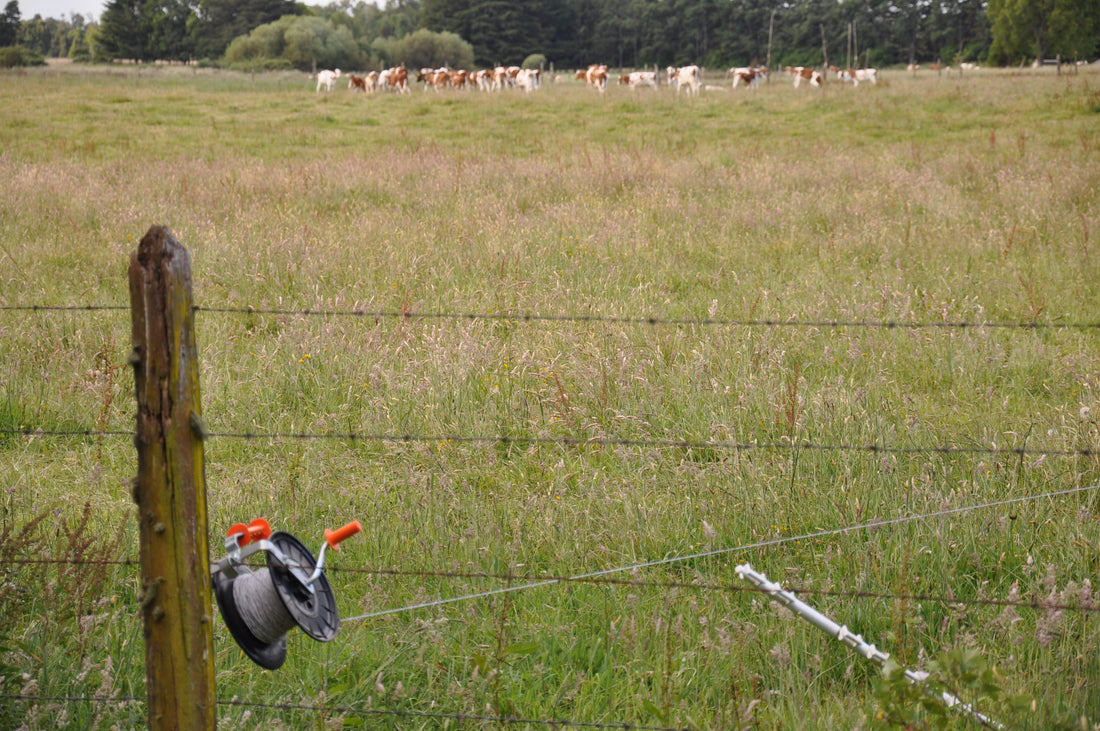
Fence Posts and Insulators | Gallagher Electric Fencing Store
Share
Post Options
Several types of posts can be used for fence construction. The most widely used are wooden posts. Commercially-produced posts are typically treated to extend the life of the post. With good maintenance, many fences can last 25 years or more.
Treated Posts

Pressure treated creosote post
Posts treated with Chromated Copper Arsenate (CCA) are made from southern yellow pine. The CCA they are treated with is a mixture of arsenic, chromium, and copper. This product protects the wooden posts from moisture, fungi, and insect pests. These posts often have a grayish-green tint to them.
Posts pressure-treated with creosote are also made from southern yellow pine. The creosote they are treated with is produced during the distillation of tar. As with CCA, this product protects the wooden posts from moisture, fungi, and insect pests. Posts treated with creosote are black in color.
There are limits on the use of treated posts in certified organic situations. Be sure to talk to your certifier before installing any of these posts.
Locust Posts
Locust fence posts are often made from black locust trees that grow naturally in Pennsylvania woodlands. They can also be purchased commercially for split rail fencing. These posts are not usually treated.
Steel Posts (T-posts)

Here is a T-post in (right) and out of the ground (left). Note that you have to bury it at least up past the metal plate to ensure driving stability and post alignment.
Steel posts are also known as T-posts because of their shape; if you look down at the end of the post, they are shaped like a "T". They are often finished with an enamel to prevent rusting. Most of these posts will also have an anchor plate to keep the fence post stable in the ground.
Composite Posts
Composite posts, made from wood and plastic, are designed to be lightweight and durable. They are also flexible to prevent them from breaking during impacts. This material does not conduct electricity.
Insulators
Insulators are used to hold the wire to the post of choice, without interfering with electrical connectivity. They come in various shapes, sizes, and designs, based on fence post and wire type you want to use them with. Talk to a knowledgeable fence contractor for specific information.

